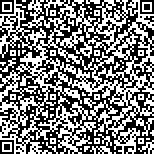| This Paper:Browse 1074 Download 0 |

码上扫一扫! |
| Precision attitude regulation of uncertain flexible spacecraft |
| HaiwenWu1,XinghuWang2,AndongSheng1,DaboXu3 |
|
|
| (1 School of Automation, Nanjing University of Science and Technology, Nanjing 210094, Jiangsu, China;2 Department of Automation, University of Science and Technology of China, Hefei 230027, Anhui, China;3 Shien-Ming Wu School of Intelligent Engineering, South China University of Technology, Guangzhou 511442, Guangdong, China) |
|
| 摘要: |
|
| 关键词: |
| DOI:https://doi.org/10.1007/s11768-023-00144-z |
|
| 基金项目:This work was supported by the National Natural Science Foundation of China (Nos. 61873250, 62073168, 61871221). |
|
| Precision attitude regulation of uncertain flexible spacecraft |
| Haiwen Wu1,Xinghu Wang2,Andong Sheng1,Dabo Xu3 |
| (1 School of Automation, Nanjing University of Science and Technology, Nanjing 210094, Jiangsu, China;2 Department of Automation, University of Science and Technology of China, Hefei 230027, Anhui, China;3 Shien-Ming Wu School of Intelligent Engineering, South China University of Technology, Guangzhou 511442, Guangdong, China) |
| Abstract: |
| Consider the precision attitude regulation with vibration suppression for an uncertain and disturbed flexible spacecraft. The disturbance at issue is typically any finite superposition of sinusoidal signals with unknown frequencies and step signals of unknown amplitudes. First we show that the conventional mathematical model for flexible spacecrafts is transformable to a multi-input multi-output (MIMO) strict-feedback nonlinear normal form. Particularly it is strongly minimum-phase and has a well-defined uniform vector relative degree. Then it enables us to develop an adaptive internal model-based controller in the framework of adaptive output regulation to solve the problem. It is proved that asymptotic stability can be guaranteed for the attitude regulation task and the vibration of flexible appendages vanishes asymptotically. Hence, the present study explores a new idea for control of flexible spacecraft in virtue of its system structures. |
| Key words: Flexible spacecraft · Disturbance rejection · Internal model principle · Attitude regulation |

